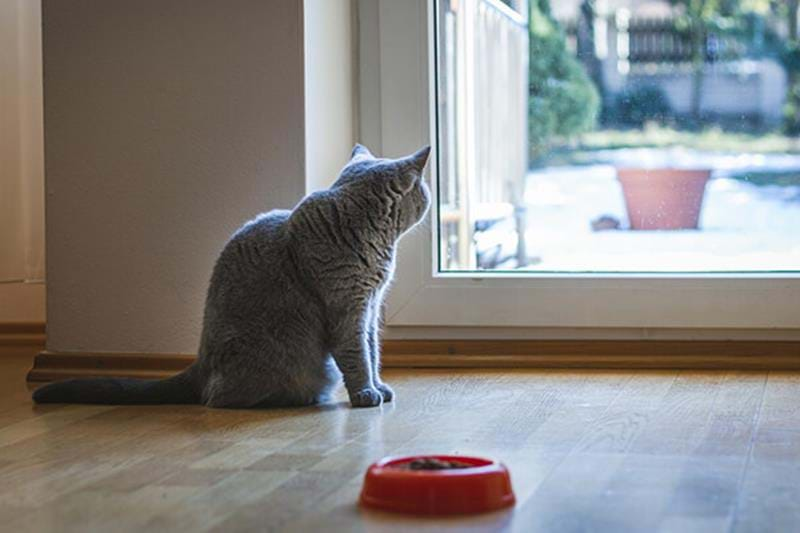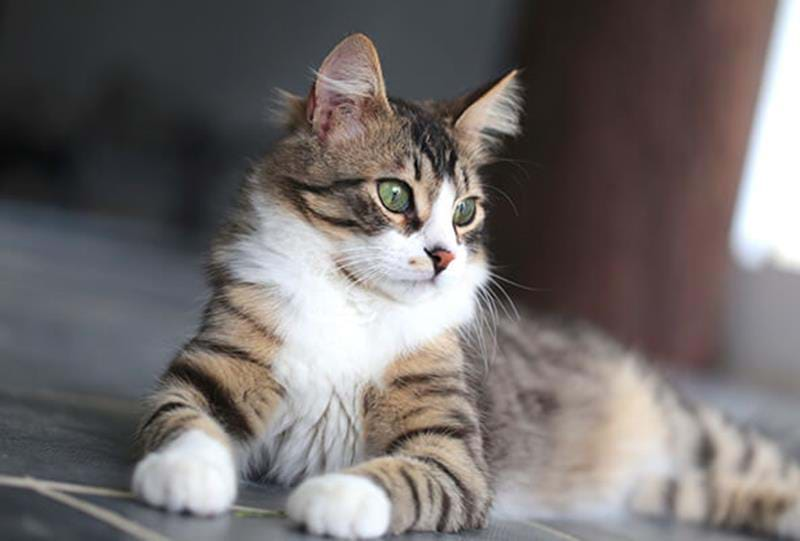Has your cat been diagnosed with a condition that means it needs a different kind of food? Whatever the reason for changing food, you need to do it in the right way. Here are a few tips from our expert Åsa Löfstrand, nutritionist and pet agronomist.
CHANGING YOUR CAT’S FOOD SHOULD BE DONE SLOWLY
Changing to a completely new food should be done gradually so that the cat’s stomach and bacteria have time to adjust. Changing the food too quickly can cause problems for the stomach and intestines, such as diarrhoea, vomiting and constipation. How quickly you can change food depends on how sensitive your cat’s stomach is, but it is generally recommended that is it done gradually over a two to four week period. Start with a maximum of 1/4 of the new food on the first day with at least 3/4 of the current food mixed in, and then gradually increase the amount of new food over a period of at least two weeks. If you notice any problems during the first few days, e.g. vomiting or a change in faeces, the change has probably been too sudden. Switch to a smaller ratio of the new food and increase very gradually over a two to four week period.
AVOID GIVING YOUR CAT TREATS DURING THE PROCESS OF CHANGING THEIR FOOD
It is a good idea not to give your cat treats or leftovers whilst you are changing their food. This will make it easier on their stomach and enable the cat to adjust to its new food without added complications.
CHANGING YOUR KITTEN’S FOOD
If you buy your kitten from a breeder, they will likely give you instructions on what to feed him. If you decide to change her food anyway, this should be done gradually and stopped if the kitten shows any signs of problems. Check with the breeder which food has been used and continue with the same type when you take the kitten home. Settling in to a new home is already a big enough challenge for a kitten without complicating matters with new food as well. After around a month, once the kitten has settled in, you can gradually introduce the new food. It is generally recommended that it is done over a two to four week period. If your kitten refuses to eat, do not simply wait for it as it may never happen. Instead, return to the previous food and try again later, or test another flavour of the new food.
TIME PLAN FOR CHANGING A KITTEN’S FOOD
- Day 1-3: 20% new food and 80% current food
- Day 4-7: 40% new food and 60% current food
- Day 8-10: 60% new food and 40% current food
- Day 11-14: 80% new food and 20% current food
- Day 15 going forward: 100% new food in the bowl
Good food for kittens
- Dry food: Bozita grain-free chicken kitten food
- Wet food: Bozita kitten pieces in jelly
Bozita expert: Åsa Löfstrand, nutritionist and pet agronomist







